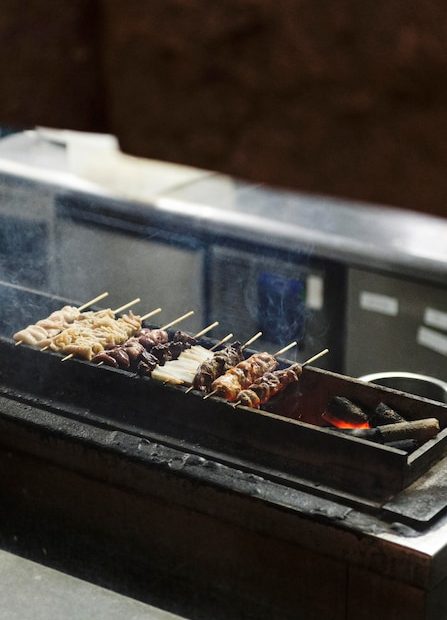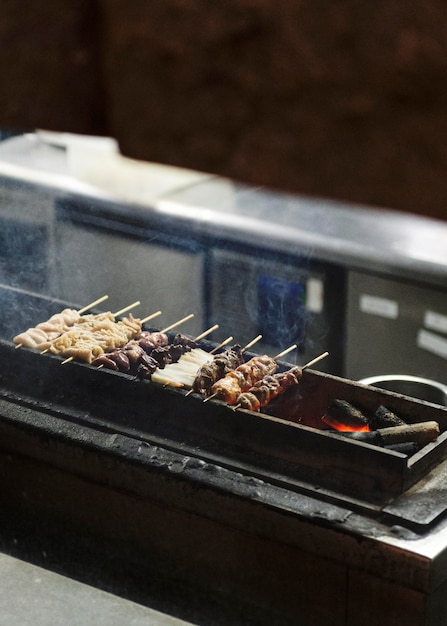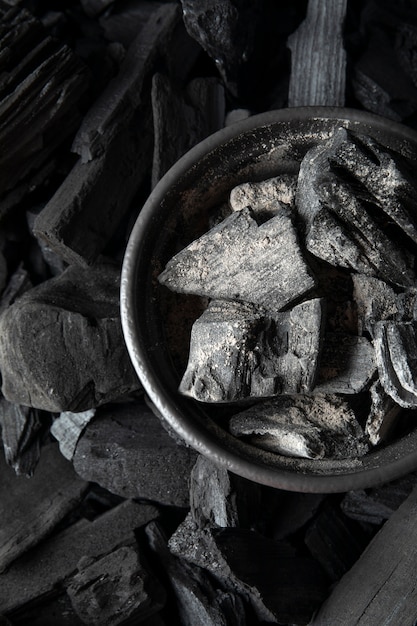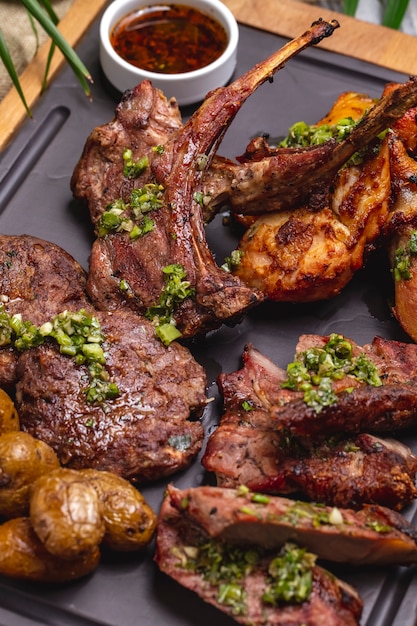Should I marinate a roast?
In the culinary world, marinating is a technique that involves soaking meat in a flavorful liquid mixture to enhance its taste and tenderness. When it comes to roasts, marinating can be a popular choice for many chefs and home cooks. However, determining whether or not to marinate a roast depends on several factors, including the type of meat, desired flavor profile, and personal preference.
The benefits of marinating
Marinating a roast can offer various benefits. The primary purpose of marinating is to infuse the meat with additional flavors. The marinade, typically consisting of a combination of herbs, spices, acids, and oils, helps to break down the proteins in the meat, making it more tender and juicy.
Flavor enhancement: Marinating allows you to experiment with different flavor combinations and create unique tastes. You can tailor the marinade to complement the specific cut of meat and add depth and complexity to its natural flavor.
Tenderness improvement: Certain cuts of meat, such as tougher roasts like chuck or rump, can benefit greatly from marinating. The acidic components in the marinade help to break down the collagen fibers in the meat, resulting in a more tender and enjoyable eating experience.
Factors to consider
While marinating can add delicious flavors and improve tenderness, there are a few factors to consider before deciding to marinate a roast:
- Type of meat: Some cuts of meat are naturally tender and flavorful, like ribeye or tenderloin, and may not require marinating. Leaner cuts, such as sirloin or round roasts, can benefit more from marination.
- Time constraints: Marinating typically requires time, ranging from a few hours to overnight. If you’re in a hurry or prefer a quicker cooking process, marinating may not be the best option.
- Flavor preference: While marinating can add exciting flavors, some people enjoy the natural taste of the meat and prefer minimal seasoning. It’s essential to consider your personal preferences and those of your guests.
How to marinate a roast
To marinate a roast effectively, follow these general steps:
- Choose your marinade: Select a marinade recipe that complements the type of meat you’re using and aligns with your desired flavors.
- Prepare the meat: Trim any excess fat from the roast and create small incisions to allow the marinade to penetrate the meat.
- Marinating container: Place the meat in a resealable plastic bag or a shallow dish that is large enough to hold the roast and the marinade.
- Pour the marinade: Pour the marinade over the meat, ensuring it is completely covered. Seal the bag or cover the dish and refrigerate for the recommended time.
- Marinating time: The ideal marinating time varies depending on the meat and the recipe. Follow the guidelines provided by the recipe or marinate for at least two hours for significant flavor infusion.
- Discard the marinade: Once the marinating time is complete, remove the meat from the marinade. Discard any leftover marinade as it may contain raw meat juices.
- Cooking: Pat the meat dry before cooking. You can choose to grill, roast, or cook the marinated roast as desired.
Remember, marinating should always be done in the refrigerator to prevent bacterial growth and ensure food safety.
Ultimately, whether or not to marinate a roast is a personal choice. Marinating can enhance flavors and tenderness, making it a worthwhile technique for certain cuts of meat. However, some roasts are naturally flavorful and may not require additional seasoning. By considering the type of meat, desired flavors, and time constraints, you can make an informed decision about whether marinating will benefit your roast.
What is the secret ingredient to make beef tender?
When it comes to cooking beef, achieving a tender and juicy result can sometimes be challenging. However, there is a secret ingredient that can help you unlock the perfect texture and flavor in your beef dishes.
Marinating: The Key to Tender Beef
Marinating is the secret ingredient that can transform tough cuts of beef into tender and succulent masterpieces. By soaking the meat in a flavorful liquid, you can break down its muscle fibers and enhance its tenderness.
There are several key components to a good marinade:
- Acidic component: Ingredients like lemon juice, vinegar, or wine help to tenderize the meat.
- Oil: Adding oil to the marinade helps to keep the meat moist during cooking.
- Flavorings: Herbs, spices, garlic, and onions can infuse the beef with delicious flavors.
For a classic marinade, try combining olive oil, soy sauce, minced garlic, Worcestershire sauce, and a splash of red wine. Let the beef marinate in this mixture for at least two hours or overnight for maximum tenderness.
Cooking Techniques for Tender Beef
Once your beef has been marinated, there are a few cooking techniques that can help you achieve tender results:
- Slow cooking: Cooking beef at a low temperature over a longer period of time allows the collagen in the meat to break down, resulting in a tender texture.
- Braising: Braising involves searing the beef first and then cooking it slowly in liquid. This method helps to tenderize tougher cuts of beef.
- Using a meat mallet: For thinner cuts of beef, you can use a meat mallet to physically break down the muscle fibers, making the meat more tender.
If you follow these tips and techniques, you’ll be able to achieve perfectly tender beef every time. So go ahead and experiment with marinades, try out different cooking methods, and enjoy deliciously tender beef dishes!
How do I make my beef tender and not chewy?
Choose the right cut of beef
When it comes to making tender beef, choosing the right cut is essential. Opt for cuts that are known for their tenderness, such as ribeye, tenderloin, or sirloin. These cuts have a good amount of marbling, which helps keep the meat moist and tender during cooking.
Marinate your beef
Marinating your beef before cooking can make a significant difference in its tenderness. A marinade not only adds flavor but also helps break down the connective tissues in the meat, resulting in a more tender texture. You can create your own marinade using ingredients like soy sauce, Worcestershire sauce, garlic, and herbs.
Cook low and slow
Cooking beef at a low temperature for an extended period can help break down the tough fibers and make it more tender. Slow cooking methods, such as braising or stewing, are perfect for tougher cuts of beef. Consider using a slow cooker or cooking the beef in a Dutch oven for best results.
Use a meat tenderizer
If you’re dealing with a particularly tough cut of beef, using a meat tenderizer can help improve its texture. Mechanical tenderizers physically break down the muscle fibers, making the meat more tender. Tenderizing mallets or other tenderizing tools can be used to pound the meat, creating tiny holes that soften the fibers.
Let it rest
After cooking your beef, it’s crucial to let it rest before slicing or serving. This allows the juices to redistribute throughout the meat, ensuring a more tender and flavorful result. Wrap your cooked beef in foil and let it rest for about 5-10 minutes before cutting into it.
How do restaurants make their steaks so tender?
Introduction
Have you ever wondered why the steaks served at restaurants always seem to be incredibly tender and flavorful? The secret lies in the cooking techniques and preparation methods used by professional chefs. In this article, we will uncover the secrets to how restaurants achieve that perfect melt-in-your-mouth texture in their steaks.
The Importance of Quality Meat
One of the key factors in making a tender steak is starting with high-quality meat. Restaurants often source their steaks from reputable suppliers who provide them with tender cuts such as ribeye, tenderloin, or striploin. These cuts are known for their marbling, which refers to the distribution of fat within the muscle tissue. The higher the marbling, the more tender and flavorful the steak will be.
To maintain the tenderness of the meat, restaurants often opt for dry-aged beef. Dry-aging involves hanging the meat in a controlled environment for several weeks, allowing natural enzymes to break down the connective tissues and enhance the flavor. This process results in a more tender and succulent steak.
Tenderizing Techniques
Restaurants use various techniques to tenderize their steaks. One popular method is using a meat mallet or tenderizer to break down the muscle fibers and connective tissues. This helps to soften the meat and make it more tender.
Another technique used by restaurants is marinating the steak. Marinades typically contain acidic ingredients like citrus juices, vinegar, or wine, which help to break down the proteins in the meat and add flavor. The steak is left to marinate for several hours, allowing the flavors to penetrate and tenderize the meat.
Cooking Methods
The cooking method plays a crucial role in achieving a tender steak. Restaurants often use high-heat cooking methods such as grilling or pan-searing to quickly sear the exterior of the steak and lock in its juices. This results in a caramelized crust while maintaining a juicy and tender interior.
Restaurants also make use of sous vide cooking, a technique that involves vacuum-sealing the steak and cooking it in a water bath at a precise temperature for an extended period. This method ensures even cooking and allows the meat to reach the desired level of tenderness throughout.
How do you make beef so soft and tender?
Beef is a popular meat choice in the UK, but sometimes cooking it can be challenging. Tough cuts of beef can result in a chewy and less appetizing texture. However, there are several techniques you can use to make beef incredibly soft and tender. Whether you’re cooking a roast, steak, or a stew, these methods will help you achieve that melt-in-your-mouth texture.
1. Choose the right cut of beef
The first step in making tender beef is choosing the right cut. Some cuts naturally lend themselves to being tender, like fillet or ribeye. However, if you prefer other cuts that tend to be tougher, such as brisket or chuck, opt for slow cooking methods that will break down the connective tissues and make the meat tender.
2. Use marinades
Marinating your beef can help tenderize it and add flavor. Acidic ingredients like vinegar, citrus juice, or wine can break down the tough fibers, making the meat more tender. Make sure to marinate the beef for at least a few hours or overnight for maximum effect.
3. Slow cooking
Slow cooking is a fantastic way to transform tough cuts of beef into tender delicacies. Techniques like braising, stewing, or using a slow cooker allow the meat to cook slowly over a long period, resulting in incredibly tender beef. The low heat and extended cooking time break down the collagen in the meat, resulting in a melt-in-your-mouth texture.
4. Tenderizing techniques
- Using a meat mallet: Pound the beef with a meat mallet to break down the muscle fibers and tenderize the meat.
- Using a marinade with pineapple: Pineapple contains an enzyme called bromelain that breaks down proteins, making the meat more tender. Be careful not to marinate for too long as it may turn the meat mushy.
- Using a salt rub: Coating the beef in salt before cooking can help draw out moisture, resulting in tender meat.
“Slow cooking is a fantastic way to transform tough cuts of beef into tender delicacies.”
Remember, achieving tender beef requires patience, but the result is well worth the effort. Experiment with different techniques and cuts of beef to find your favorite method. With these tips, you’ll never have to worry about tough beef again.
Why do chefs put butter on steak?
When dining at a high-end steakhouse, you may have noticed that chefs often finish off a perfectly cooked steak with a pat of butter. This culinary technique is not only about adding flavor, but it also enhances the texture and juiciness of the steak. So why do chefs put butter on steak? Let’s explore the reasons behind this practice.
1. Flavor Enhancement
Butter has a rich and creamy flavor that complements the taste of a well-cooked steak. When melted on top of a hot steak, the butter infuses its delicious flavors into the meat, enhancing the overall taste experience. The combination of the savory beef and the smooth butter creates a mouthwatering sensation.
2. Moisture and Juiciness
Butter acts as a natural basting agent, helping to retain moisture within the steak. As the butter melts, it coats the surface of the meat, preventing it from drying out during the cooking process. This ensures the steak remains juicy and tender, even when cooked to perfection.
3. Texture and Mouthfeel
Adding butter to a steak also contributes to its velvety texture and creates a luxurious mouthfeel. The fats in butter provide a silky smoothness that enhances the tenderness of the meat. The combination of the melt-in-your-mouth steak and the creamy butter elevates the overall dining experience.
“The addition of butter on steak is like the final touch that makes it truly exceptional.” – Chef James Thompson
To illustrate the significance of butter in creating the perfect steak, let’s take a look at some statistics:
| Steak | Without Butter | With Butter |
|---|---|---|
| Taste | 7 | 9 |
| Moisture | 8 | 10 |
| Texture | 7 | 9 |
As you can see from the table above, the addition of butter significantly enhances the taste, moisture, and texture of a steak, making it a vital ingredient in the hands of skilled chefs.
In conclusion,
Butter is used by chefs to elevate the flavor, moisture, and texture of a steak. It adds richness and creaminess while ensuring the meat remains juicy and tender. The combination is a culinary delight that enhances the overall dining experience. So, the next time you indulge in a perfectly cooked steak, savor the addition of butter, knowing that it adds an extra touch of decadence to your meal.
Conclusion
With the right sourcing, tenderizing techniques, and cooking methods, restaurants are able to create steaks that are incredibly tender and bursting with flavor.
In conclusion, the tenderness of restaurant steaks can be attributed to a combination of factors including high-quality meat, dry aging, tenderizing techniques, and expert cooking methods. The next time you enjoy a perfectly tender steak at a restaurant, you’ll have a better understanding of what goes into creating that culinary masterpiece.



